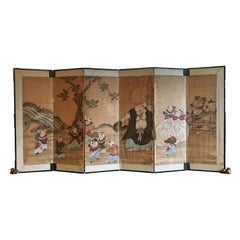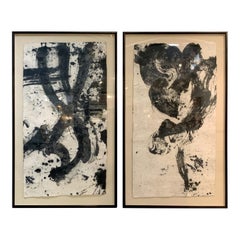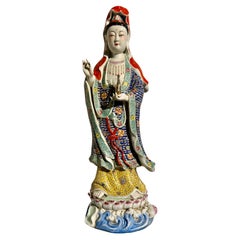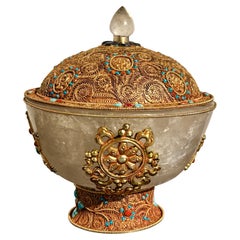Questions & Answers
Our trusted network of 1stDibs sellers answer common questions
What is a Japanese low screen used for?
1 Answer
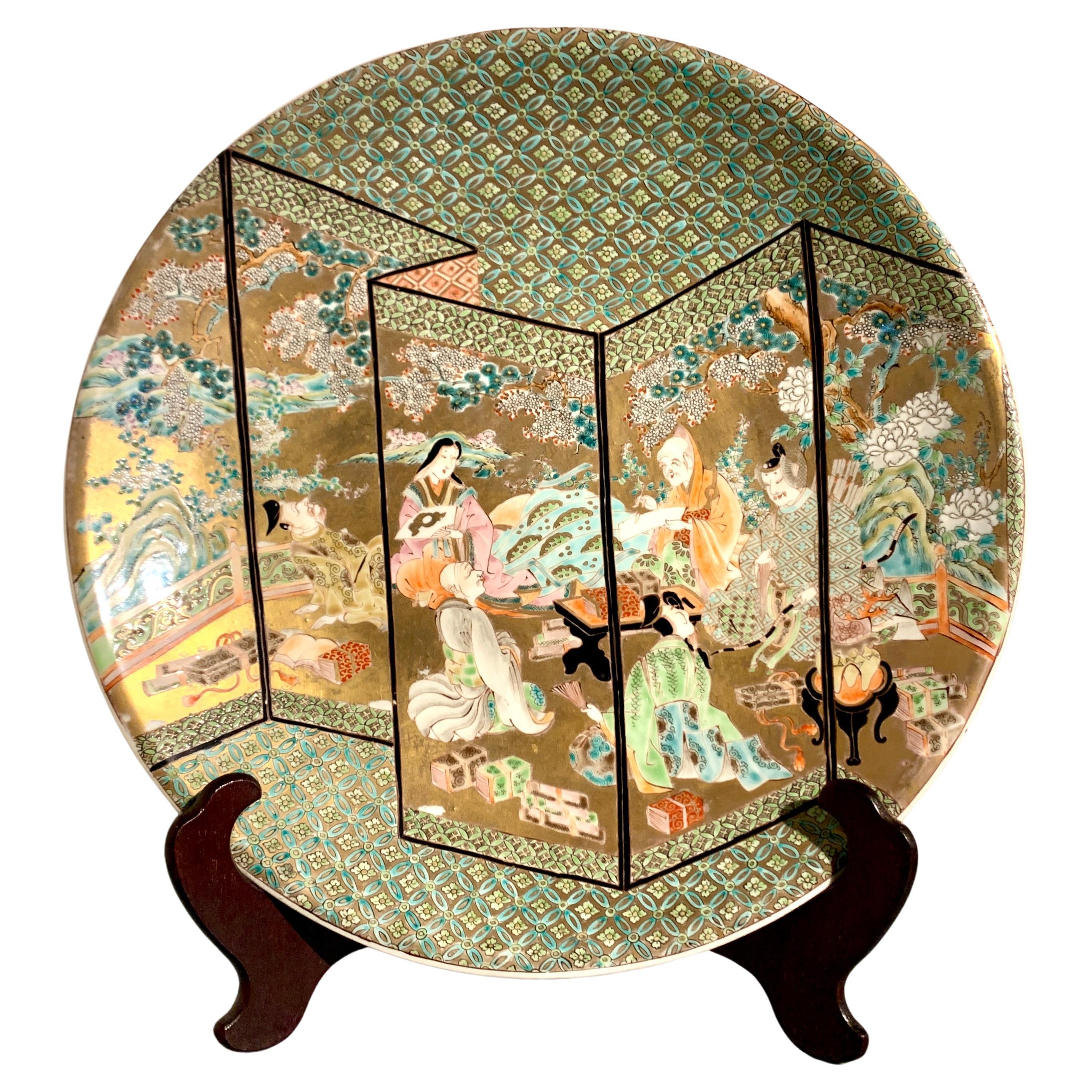
A Japanese low screen was traditionally used while seated upon the floor. The low screen would block wind and drafts, provide limited privacy, and are often decorated with seasonal themes.

Lotus GalleryMarch 17, 2021
Related Questions
- What are Japanese screens called?1 Answer
- What is a Chinese screen?1 Answer
- What is a dressing screen called?1 Answer
- What is a fireplace screen called?1 Answer
- What is the screen in front of a fireplace called?1 Answer
Shop for Japan Screen on 1stDibs
Japanese Six Panel Screen with Hotei, Edo Period, Early 19th Century
Located in Austin, TX
A delightful Japanese six panel painted paper screen featuring the beloved figure Hotei, Edo Period
Category
Antique Early 19th Century Japanese Edo Paintings and Screens
Materials
Silk, Paper
Pair of Japanese Edo Period Six-Panel Screen, "100 Boys at Play"
Located in Austin, TX
An absolutely charming pair of Japanese Tosa School six-panel folding screens painted with the "One
Category
Antique Early 19th Century Japanese Edo Paintings and Screens
Materials
Gold Leaf
Pair Large Framed Japanese Calligraphy "Dragon" & "Tiger", Mid 20th Century
Located in Austin, TX
A large and powerful pair of Japanese calligraphic works, mid 20th century, Japan. One reading
Category
Mid-20th Century Japanese Expressionist Paintings and Screens
Materials
Paper
Large Framed Japanese Buddhist Amida Temple Hall Painting, Mid-19th Century
Located in Austin, TX
A large and incredible Japanese painting of a Buddhist temple hall with Amida Nyorai, late Edo or
Category
Antique Mid-19th Century Japanese Meiji Paintings and Screens
Materials
Wood, Paint, Brocade, Silk, Acrylic
Large Japanese Imari Gilt Charger, the Six Immortal Poets, Meiji Period, Japan
Located in Austin, TX
A bold and unusual large 18.5" diameter Japanese gilt ground Imari porcelain charger featuring the
Category
Antique Early 1900s Japanese Meiji Ceramics
Materials
Porcelain
Shop More furniture from Lotus Gallery on 1stDibs
Large Delft Blue and White Fluted Octagonal Jar, JV Duijn, 18th c, Netherlands
By De Porceleyne Schotel, Johannes Van Duijn
Located in Austin, TX
A large and impressive Dutch Delft jar of octagonal shape with fluted sides, mark for Johannes Van Duijn, De Porceleyne Schotel Factory, 1764 - 1773, Delft, Holland, the Netherlands....
Category
Antique Mid-18th Century Dutch Chinoiserie Jars
Materials
Faience, Pottery, Earthenware, Delft
Chinese Famille Rose Enameled Porcelain Guanyin, Zeng Longsheng, 1980's, China
Located in Austin, TX
A large and vibrantly decorated Chinese famille rose enameled porcelain figure of Guanyin, marked Zeng Longsheng (1901 - 1964), but of later manufacture, circa 1980's, China.
The t...
Category
Vintage 1980s Chinese Qing Sculptures and Carvings
Materials
Porcelain
Tibetan Rock Crystal Covered Bowl with Gilt Silver Filigree Mounts, Modern
Located in Austin, TX
A sumptuous Tibetan rock crystal bowl and cover mounted in gilt silver filigree and studded with coral, turquoise, and lapis lazuli.
The extravagant bowl has been carved out of a si...
Category
21st Century and Contemporary Tibetan Tibetan Decorative Bowls
Materials
Coral, Lapis Lazuli, Multi-gemstone, Rock Crystal, Silver
Japanese Bronze Deer Incense Burner, Koro, Meiji Period, late 19th c, Japan
Located in Austin, TX
An elegant and ethereal Japanese bronze censer, koro, in the form of a deer, Meiji Period, late 19th century, Japan.
The deer is portrayed standing upon thin, spindly legs, one leg ...
Category
Antique Late 19th Century Japanese Meiji Sculptures and Carvings
Materials
Bronze
Kinkozan Satsuma Plate with Miniature Figures, Meiji Period, circa 1900, Japan
By Kinkozan
Located in Austin, TX
A very finely painted Japanese Satsuma plate with miniature figural paintings, signed Kinkozan for the Kinkozan workshops, Meiji Period, circa 1900, Japan.
The lovely plate crafted ...
Category
Antique Early 1900s Japanese Meiji Ceramics
Materials
Ceramic, Stoneware
Japanese Maki-e Lacquer Sutra Box with Peony Mon, Meiji Period, c 1900, Japan
Located in Austin, TX
A Japanese maik-e decorated black lacquer sutra box, kyobako, with peony mon design, Meiji Period, circa 1900, Japan.
The elegant lacquer box originally crafted to hold sutras, sacr...
Category
Antique Early 1900s Japanese Meiji Lacquer
Materials
Copper
Japanese Bronze Water Coupe, Eguchi as Fugen, Edo/Meiji Period, Japan
Located in Austin, TX
A very finely cast Japanese bronze water coupe in the form of the courtesan Eguchi riding an elephant, signed Kazutada, Edo to Meiji Period, mid 19th century, Japan.
The small and elegant bronze water coupe is exquisitely cast to depict a figure of a seated lady reading poetry upon the back of a large recumbent elephant. This image depicts the Courtesan of Eguchi as Fugen Bosatsu...
Category
Antique Mid-19th Century Japanese Meiji Scholar's Objects
Materials
Bronze
